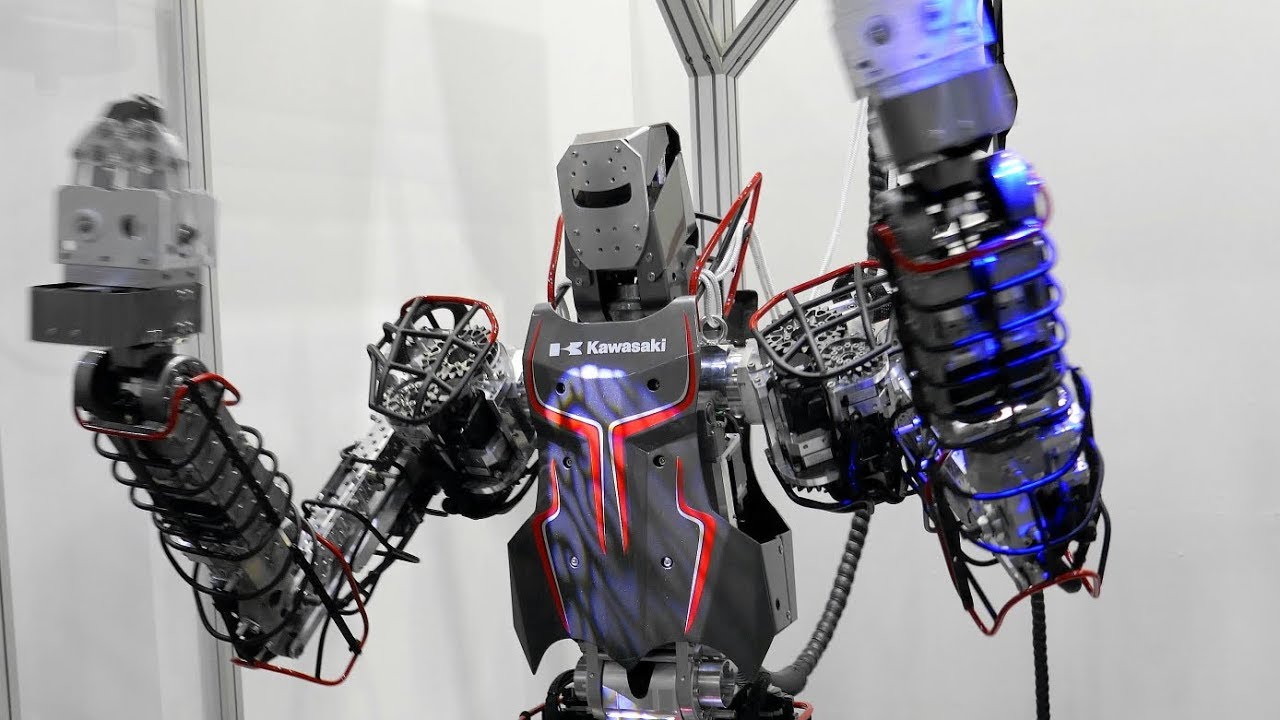Kaleido

Kawasaki debuted its concept humanoid robot at International Robot Exhibition (iREX) 2017. At 178 cm tall and 85 kg heavy, the robot can bench 60 kg and do pull ups. The robot has a total of 32 DoF.
2019 Update
At iREX 2019, held at Tokyo Big Sight from December 18 to 21, 2019, Kawasaki unveiled Kaleido. In an interview on Kawasaki’s website, Masayuki Kamon (head of the project) refered to what was shown at iREX 2017 as the second generation of Kawasaki humanoid. He considers what was shown at iREX 2019 to be either 5th or 6th generation.
The first upgrade was adding an internal battery, as the original robot from 2017 needed an external power supply. The robot also no longer needed external motor controllers.
Professor Masayuki Inaba, from the Jouhou System Kougaku (JSK) Laboratory of the University of Tokyo, added force sensors to the ankles of the robot to prevent it from falling. Kaleido—which had previously only been able to walk on all fours or holding onto surrounding objects— was now able to walk upright unassisted. Kaleido can currently walk at 1 km/h, but the goal is to reach 4 km/h.
Kaleido also gained a camera system which allows it to recognize fiducials and navigate autonomously.
Variants
Masayuki Kamon mentioned in an interview that hydraulic actuators will be required to make Kaleido reliable enough to run 24/7 for 365 days a year. A hydraulic leg was presented at iREX 2017 as a single limb. At iREX 2019, a similar hydraulic actuator was presented inside of a robot.
Where are they now?
One Kaleido is on static display at Kawasaki Robostage in Tokyo.
All information for this article was sourced from https://robotics.kawasaki.com/
